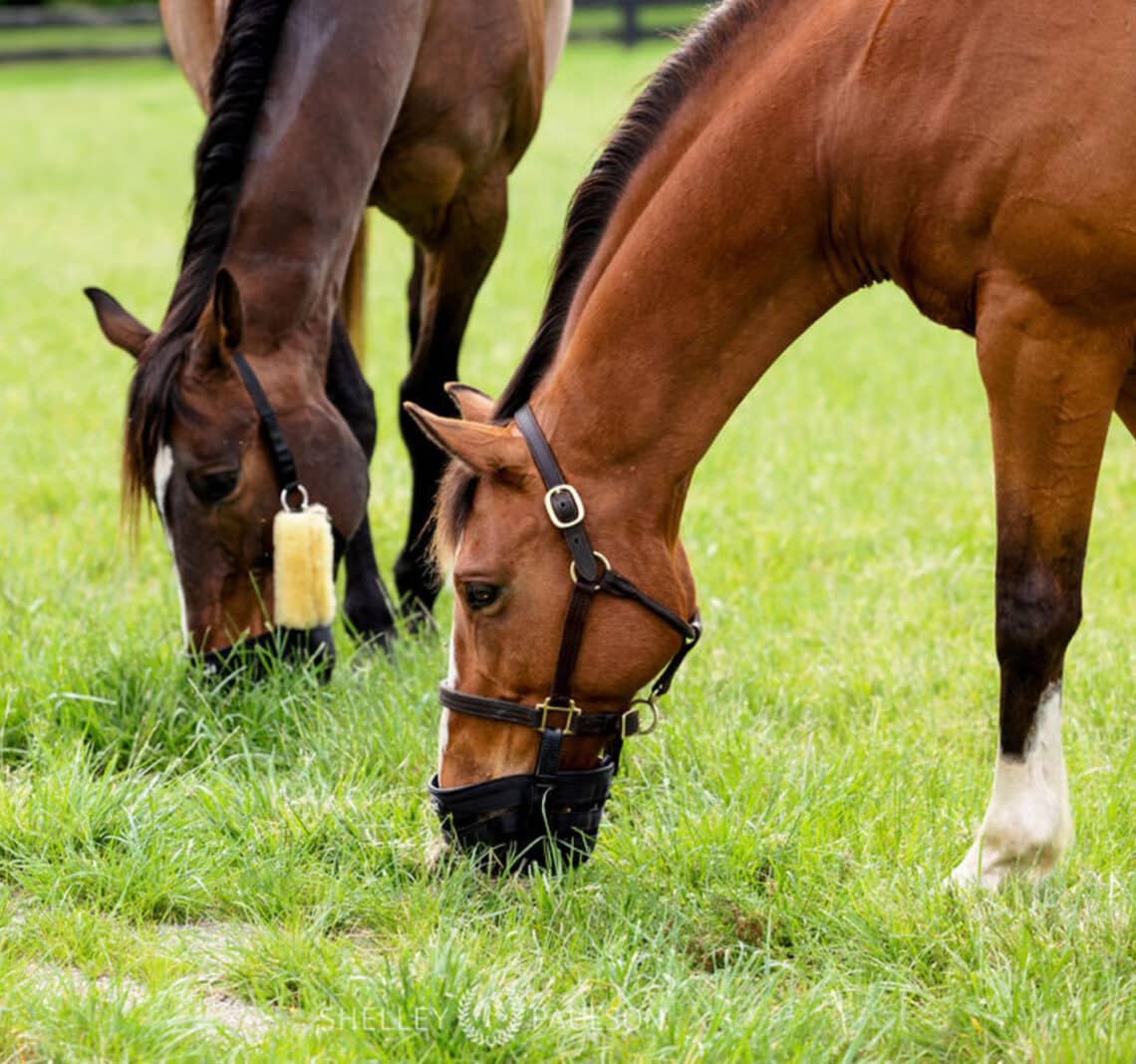
Feeding for ulcers: what you should know
Prevention is better than cure, and DR CLARISSA BROWN-DOUGLAS has expert advice on the causes, treatment and prevention of equine gastric ulcers.
The incidence of equine gastric ulcer syndrome (EGUS) is extremely high, particularly in performance horses. While many horses are symptom free, signs of gastric irritation include lack of appetite, irritable behaviour, girthiness, poor performance, unwillingness to go forward, as well as weight loss, poor coat, and mild colic.
Gastric ulcers are diagnosed by having your veterinarian perform a gastroscope, which requires fasting and sedation. However, recent research on a saliva test measuring specific proteins has shown promise in diagnosing EGUS. This would certainly be welcome news for horse owners who would like a more economical and less invasive diagnostic tool.
EGUS is divided into two types based on the location of lesions in the stomach: equine glandular gastric disease (EGGD) refers to glandular lesions affecting the lower, glandular region of the stomach; equine squamous gastric disease (ESGD) refers to squamous ulcers affecting the upper, non-glandular region. Although both EGGD and ESGD are clumped under the umbrella term EGUS, they are different diseases with different risk factors, and can occur in horses either in isolation or together. Because their treatment and management strategies differ, it is important to get a veterinary diagnosis. By far the most diagnosed and understood ulcers are those in the upper or squamous region of the stomach (ESGD).
Estimates on the prevalence of gastric ulcers indicate:
- Warmbloods (47%) and sport ponies (35%) appear to suffer EGGD more commonly than other breeds; while incidence of ESGD in these sport horse breeds can be up to 70%.
- In Standardbreds, ESGD occurs more commonly than EGGD, with between 58% and 100% of evaluated horses affected.
- Up to 93% of Thoroughbreds in active training have ESGD, while over 50% have EGGD.

The major cause of ESGD in horses is prolonged exposure of the upper portion of the stomach lining (squamous mucosa) to gastric acid. Unlike humans, horses continuously produce and secrete stomach acid. The glandular region of the stomach, which produces gastric acid, has several protective features including a shield-like mucous layer and the secretion of bicarbonate onto its surface. The upper (squamous) region is only protected by pepsin and bicarbonate in saliva. If adequate saliva is not produced to buffer the gastric acid and coat the squamous epithelium (a thin layer of protective cells), then gastric irritation occurs and lesions may develop.
Horses evolved as wandering grazers with digestive tracts designed for continual consumption of forage – hence ulcers are less common in horses maintained solely on pasture. The high incidence of ulcers seen in performance horses is a problem that stems from the way we manage and feed them. Meals of cereal grain or high starch prepared feeds, or extended periods of fasting lead to excess gastric acid output without adequate saliva production. Performance horses are at even higher risk if they are exercised on an empty stomach, with gastric acid free to splash around and irritate the sensitive stomach lining.
Lesions in the lower glandular region (EGGD) are less understood but are a concern in performance horses, especially Warmbloods. EGGD appears to be more closely linked to exercise management, heavy workload, and stress, rather than nutrition – and those horses actively competing, or in full work with limited rest days, are more susceptible.
To determine specific causes and effective treatments, research into EGGD risk factors and treatment is ongoing. Traditional EGUS treatment using omeprazole has inconsistent results in EGGD horses. Current treatment strategies for EGGD, along with workload management, include the use of omeparazole with sucralfate, a long-acting shielding agent which binds to ulcerated areas of the stomach protecting it from gastric acid.

There are limited nutritional links to EGGD. However, because it is an inflammatory disease, it would be prudent to supplement horses in heavy work with anti-inflammatory compounds such as the long chain omega 3 fatty acids DHA and EPA. There has also been some recent research which positively links increased levels of lucerne in the diet with lower rates of EGGD.
The more commonly diagnosed ESGD is safely and effectively treated using medications available from your veterinarian (for example omeprazole and sucralfate), although these are expensive and as with most disease, prevention is better than cure! There are many preventative supplements on the market which buffer stomach acid and support digestive health. However, correct nutrition and adequate fibre intake is vital for a healthy digestive tract.
Ensuring your horse has adequate access to forage (hay, pasture, chaff) is the first port of call – adequate fibre intake is vital for a healthy digestive tract in all horses. It is recommended to feed at least 1% of a horse’s body weight in fibre per day, ideally 1.5% – so a 500kg horse should be offered 5 to 7.5kg of forage. A major risk factor for ESGD is an increased time between meals, so pasture turnout or ad lib hay on offer is vital for all horses – even those in the Jenny Craig paddock. For overweight horses, source low sugar, stalky hay and use a slow-release hay net or a well-fitted grazing muzzle to limit intake.
Multiple studies have shown lucerne forage to be effective in reducing the severity of ulcers in horses. Due to its higher protein and calcium content (as compared to grass forages), lucerne provides superior buffering capacity. It is therefore worth considering the addition of lucerne chaff or hay to your horse’s ration. To reduce acid splash, it is also recommended that horses are fed lucerne hay or chaff before a work out, and that they are never exercised on an empty stomach.
Because high starch/grain diets are a risk factor for ESGD, the optimal approach is to reduce the starch intake of the horse’s diet and provide calories from fat and fibre. Safe and recommended fibre sources include beet pulp, soy hulls, chaff and hay. Adding fat is a great source of calories. However, there is a twist here on our normal preference for omega 3 fatty acids. In the stomach, omega 6 fatty acids have been shown to stimulate the production of protective prostaglandins and to increase the pH, so using vegetable oil, sunflower seeds or stabilised rice bran as your fat supplement for horses with or at risk of ESGD is preferred.
Another risk factor is intermittent access to water. Horses should always have clean fresh water available to them, including during travel. Furthermore, avoiding strong saline drenches or unbuffered electrolyte pastes is wise, as they can increase stomach irritation.
There are a multitude of supplements on the market which claim to support gastric health and prevent gastric ulcers. While some do in fact support the healing of the stomach, many lack scientific research to validate their effectiveness, thus, as always, buyer beware!
Common ingredients in gastric health supplements that have some scientific research supporting their efficacy include antacids and buffers designed to increase the pH of the stomach and gut; yeast derivatives which support digestive health; and lecithin, a phospholipid which protects the gut wall from acid. There are also a range of nutraceutical ingredients on the market such as aloe vera, liquorice, buckthorn berries, and slippery elm bark – but evidence for their efficacy is lacking.
As with all health concerns, it is highly recommended to work with your veterinarian if you suspect your horse has gastric ulcers. We also recommend using a qualified equine nutritionist to assist in planning a tailored nutrition program for your horse.
Please contact Kentucky Equine Research for nutrition advice and visit Equinews™ for more information on EGUS and other equine nutrition related topics.


